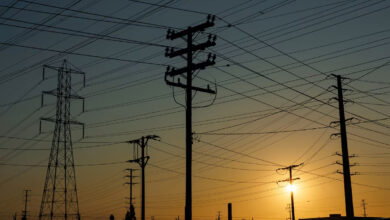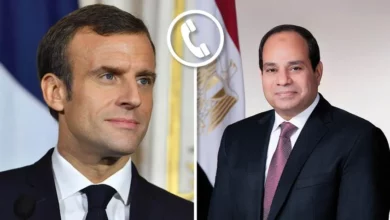
It’s been a long-held European dream to shore up its supply of renewable energy with solar power from sun-rich North Africa. Now, Italy and Tunisia have taken a first step to make this dream come true, as they signed an intergovernmental agreement for the development and joint construction of a 600-megawatt (MW) electricity link.
On April 30, the governments of Italy and Tunisia signed a deal to lay an underwater power cable between Partanna, Sicily and El Haouaria, Tunisia, aiming to integrate the EU’s electricity grid with that of North Africa.
A long time in the works, Italian transmission company Terna and Tunisian gas and electricity group STEG have been developing the so-called Elmed Mediterranean power interconnector since 2003.
“This agreement was a necessary condition to obtain EU funding and we are now awaiting developments. At the moment the project has an estimated cost of €600 million [$668 million], 50% of which should be financed by the EU while the rest will be shared between Terna and STEG,” Terna, the Italian transmission system operator (TSO), told DW.
Investors on board
Elmed is currently on the third list of EU Projects of Common Interest (PCI), which includes key infrastructure projects that can benefit from accelerated planning and permit granting.
“It is also a candidate for the 4th PCI list to be adopted towards the end of the year,” a Commission spokesperson indicated, adding that the European executive “follows with interest the development of the Elmed project, as far as it would allow the integration of the electricity markets between North Africa and Europe.”
According to the World Bank, which is arranging the financing for the project preparation and supporting Tunisia’s efforts to assess the viability of the interconnector, the current target financial close is 2022, construction should start in 2023, and the project would be operational by 2027.
There seems to be enough appetite for the project. Apart from the World Bank and the European Commission, European lenders are potentially interested. The European Bank for Reconstruction and Development (EBRD) invested €408 million in renewable energy projects in the Mediterranean-North Africa region (MENA) from 2015. The European Investment Bank (EIB) invested another €385 million in the same period.
“The EIB is in continuous contact with most project promoters of large scale renewable energy projects and would consider possible financing as the two schemes develop,” an EIB source told DW, referring to the Elmed as much as to the TuNur project — a solar power project presented in 2017, which aims at exporting 4.5 gigawatts (GW) of renewable energy through undersea cables to Malta, Italy and France.
Two-way business
Despite being further down the line, the 200-kilometer (124-mile) Elmed project deserves a great deal of attention for several reasons. First of all, Elmed would enable a deeper integration of electricity markets in the Mediterranean area, significantly improving connections between North African countries and Europe.
“It would close the Europe-Maghreb network loop that runs from Morocco, Spain, France, Italy, Tunisia, and Algeria,” the World Bank told DW in an email.
Elmed would not only diversify supply sources and routes for Europeans, but also increase Tunisia’s energy security, the bank said. That is because the project, which was originally conceived in 2003 to export solar power generated in the Sahara to Italy, is now designed to be bidirectional.
The World Bank estimates that Elmed would be able to supply up to 16% of Tunisia’s current power needs, and help address its growing energy shortage by importing electricity from Italy. A 2016 report by the Oxford Institute for Energy Studies shares the view saying that previous projects have stalled because “they were designed around a one-dimensional business model,” only allowing exports of renewables from North Africa to Europe.
A second reason for support for Elmed is that it fits into the European Union’s strategy for Africa. Apart from already established ties with Morocco, such as electricity interconnections between Spain and Morocco, European institutions are now focusing on the Sahel area and Tunisia.
In 2018, the EU adopted a financial assistance package worth €305 million in the form of grants for Tunisia — the smallest country in the Maghreb area. Just last week, representatives from both sides met in Brussels, and in a joint statement welcomed trade relations and an increased European involvement in social and economic developments in Tunisia.
“Tunisia is a privileged partner for the EU. It can always rely on our full and sustained support throughout this difficult transition period, which comprises both a democratic transition and a socio-economic transformation,” EU Foreign Affairs Commissioner Federica Mogherini said after the meeting.
Business to curb migration
The cooperation also comes amid EU efforts to reduce the risk of illegal migration from Africa. This means renewable energies could become a test case for strengthening both political and economic ties between the EU and Tunisia.
Progress could be achieved because construction of Elmed is comparatively easy and doesn’t take much time. Upfront investments for electricity projects are also relatively low, with capital expenditure (CAPEX) for the Elmed interconnection estimated to be just around €600 million. By contrast, CAPEX for the controversial gas pipeline Nord Stream 2 between Russia and Europe is reported to be around €8 billion.
Another important aspect of Elmed is that the electricity link would support EU efforts to meet obligations under the Paris Climate Agreement aimed at cutting greenhouse gasses. And it could foster economic growth in Italy’s economically depressed South, notably Sicily, where newly built solar parks could be linked with those in Tunisia. The ultimate goal could be an integrated market, with electricity flowing from North Africa to Scandinavia.




